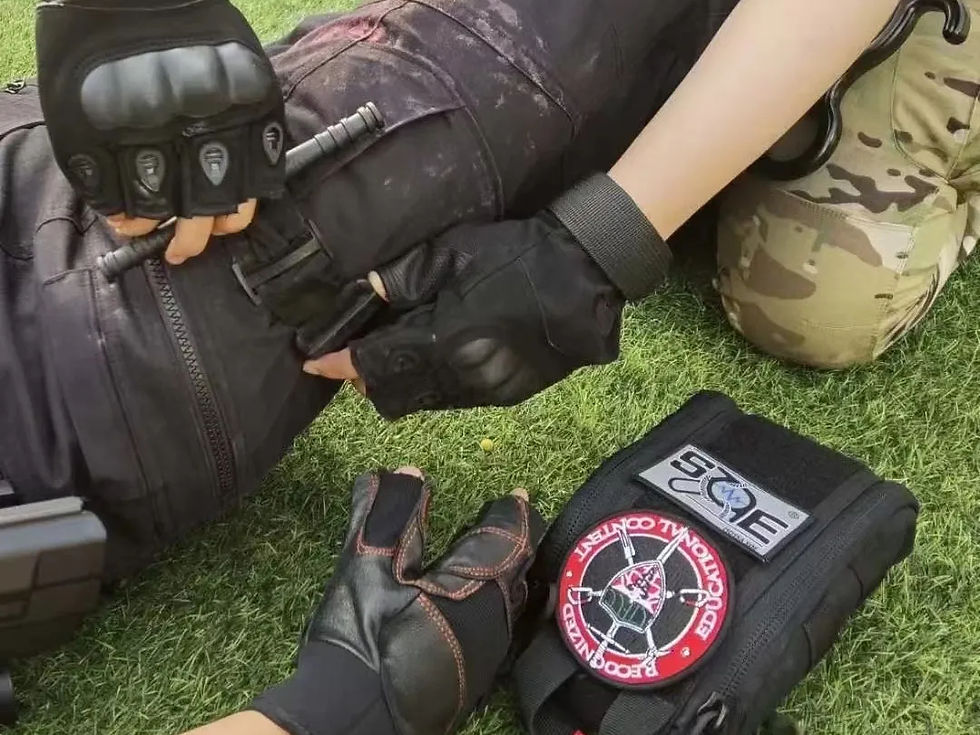Color of CAT Tourniquet and How to Choose the Right One
- YEYETAC™

- 11 hours ago
- 3 min read

When it comes to life-saving equipment, the Combat Application Tourniquet (CAT) stands as one of the most important tools for controlling severe bleeding. While its function is paramount, the color of your CAT tourniquet plays a surprisingly important role in its effectiveness across different scenarios. Let's explore how tourniquet colors affect their use and how to choose the right one for your specific needs.
Introduction to CAT Tourniquets
The Combat Application Tourniquet, commonly known as CAT, has become the gold standard for controlling life-threatening extremity bleeding. Developed for military use but now widely adopted by civilians and first responders, this tourniquet can be applied with one hand and has proven highly effective in stopping blood loss from traumatic injuries.
CAT tourniquets come in several colors, each serving specific purposes. The color choice is not just about looks and it can impact visibility, tactical considerations, training applications, and even help identify counterfeits. Understanding these color differences helps ensure you select the right tool for your environment and intended use.
Standard CAT Tourniquet Colors Quick Overview
Black CAT Tourniquets: Tactical Considerations

Black tourniquets blend seamlessly with tactical gear, reducing detection risk in covert operations. They help eliminate glare that might reveal positions.
However, they can be harder to find in low light or among dark equipment. Tactical professionals overcome this by using standardized carrying positions or adding concealable reflective markers for emergencies.
Orange/Red CAT Tourniquets: High-Visibility Options

High-visibility tourniquets prioritize quick identification over concealment. In emergencies, these bright colors are easily spotted in medical bags, vehicles, or if dropped. This visibility makes them ideal for civilian use and everyday carry.
The bright color also serves as a clear indicator that a tourniquet has been applied, helping triage teams quickly identify treated patients in mass casualty situations.
Blue CAT Tourniquets: Training and Education

Blue tourniquets clearly identify training equipment, preventing accidental use in real emergencies. They allow for repeated practice without degrading operational equipment. Since proper application requires significant force, dedicated training models help preserve life-saving operational tourniquets.
Organizations typically maintain separate inventories of blue and operational tourniquets to ensure clear visual separation between training and emergency equipment.
Making the Final Decision: How to Choose

When selecting your CAT tourniquet color, consider these key factors:
Primary environment where the tourniquet will be used or carried
Organizational requirements if applicable to your role
Visibility needs based on storage location and potential use scenarios
Training requirements (separate blue tourniquets for practice)
Personal preference that ensures you'll actually carry it
Remember that the most important factor is having a quality, authentic tourniquet available when needed. The best color is the one on the tourniquet you actually have with you in an emergency.
Conclusion
Choosing the right CAT tourniquet color balances visibility, tactical considerations, and intended use. Whether you select black for tactical operations or orange for quick identification, ensure it's genuine and you're properly trained in its use. Your choice could save a life when seconds matter.
FAQs
Do different colored CAT tourniquets have different effectiveness rates?
The effectiveness of a CAT tourniquet is identical regardless of color, as the internal mechanism and materials remain consistent across all color variations.
Can I use a blue training tourniquet in a real emergency?
Blue training tourniquets are not designed for actual medical use and may fail under the pressure needed to stop arterial bleeding in a real emergency.
Are there regulations about what color tourniquets different agencies must use?
Many agencies have internal policies rather than legal requirements, though some military and law enforcement organizations do mandate specific colors for standardization.
Does tourniquet color affect its durability or shelf life?
The color itself doesn't impact durability or shelf life, though darker colors may show wear less visibly than lighter-colored tourniquets.
Do hospitals prefer specific colored tourniquets?
Hospitals typically prefer high-visibility tourniquets like orange or red to ensure quick location in emergency departments and proper identification when applied to patients.




Comments